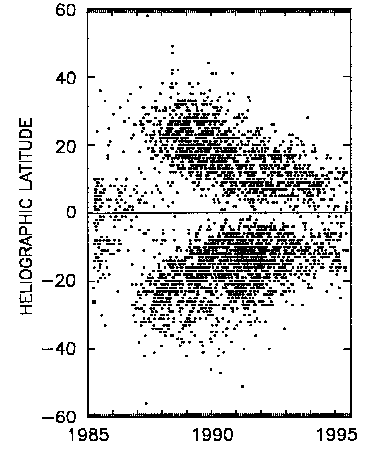|
|
|
|
The Sunspot Cycle |
|
 Cycles have been around Cycles have been aroundIn the last few decades, we've started to understand the forces behind sunspots, but we've known for over a 150 years that sunspots appear in cycles. The average number of visible sunspots varies over time, increasing and decreasing on a regular cycle of between 9.5 to 11 years, on average about 10.8 years. An amateur astronomer named Heinrich Schwabe, was the first to note this cycle, in 1843. The part of the cycle with low sunspot activity is referred to as "solar minimum" while the portion of the cycle with high activity is known as "solar maximum."
|
| Do sunspots affect earth's climate? From 1645 to 1715, there was a drastically reduced number of sunspots. This period of reduced solar activity, which was first noticed by G. Spörer, was later investigated by E.W. Maunder, is now called the Maunder Minimum. That the same period of time was also unusually cold on Earth. Similar periods of low solar activity seem to have occurred during the Spörer Minimum (1420-1530), the Wolf Minimum (1280-1340), and the Oort minimum (1010-1050). This succession of low-temperature periods is now called the "Little Ice Age," and the corresponding pattern of extreme sunspot minima has led to speculation that sunspot activity may affect the earth's climate. |
|
|
|
|
|
|
©Copyright 2001 Regents of the University of California. |
 Migration
Migration